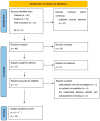Nutrigenetic Investigations in Preeclampsia
- PMID: 39408215
- PMCID: PMC11478722
- DOI: 10.3390/nu16193248
Nutrigenetic Investigations in Preeclampsia
Abstract
Background: Preeclampsia is a leading cause of pregnancy-related maternal and fetal morbidity and mortality. Although its precise cause and prevention remain unclear, risk factors such as overweight and inadequate nutrient intake (e.g., calcium, folic acid, and vitamin D) are known to increase its incidence. Recent research has focused on the genetic predisposition to preeclampsia, identifying polymorphisms that may affect enzyme or receptor function. This study aims to review existing literature examining the relationship between genetic polymorphisms, BMI (body mass index), and nutrient levels in preeclampsia to develop more actionable therapeutic strategies. Methods: A systematic review was conducted to analyze studies on the nutrigenetic relationship between BMI, micronutrients, and preeclampsia. Results: A total of 17 studies investigating 12 genes related to BMI and 10 studies exploring 3 genes in relation to micronutrient levels were included in the analysis. Several polymorphisms associated with preeclampsia were found to be influenced by maternal BMI or serum vitamin levels. The interactions between certain gene variants and these factors suggest that both BMI and micronutrient status may modify the risk of developing preeclampsia in genetically predisposed individuals. Conclusions: Our findings emphasize the potential for reanalyzing existing data by categorizing based on genotype and nutrient levels. This approach could yield more personalized dietary and therapeutic recommendations for managing preeclampsia. In the future, genetic information may support the development of tailored nutritional counseling during pregnancy to mitigate preeclampsia risk.
Keywords: BMI; MTHFR; VDR; nutrient; polymorphism; preeclampsia.
Conflict of interest statement
There was no financial support related to the preparation of the manuscript.
Figures








References
-
- Brown M.A., Magee L.A., Kenny L.C., Karumanchi S.A., McCarthy F.P., Saito S., Hall D.R., Warren C.E., Adoyi G., Ishaku S., et al. The Hypertensive Disorders of Pregnancy: ISSHP Classification, Diagnosis & Management Recommendations for International Practice. Pregnancy Hypertens. 2018;13:291–310. doi: 10.1016/j.preghy.2018.05.004. - DOI - PubMed
-
- ACOG Practice Bulletin No. 202 Summary: Gestational Hypertension and Preeclampsia. Obstet. Gynecol. 2019;133:211–214. - PubMed
Publication types
MeSH terms
Substances
LinkOut - more resources
Full Text Sources

